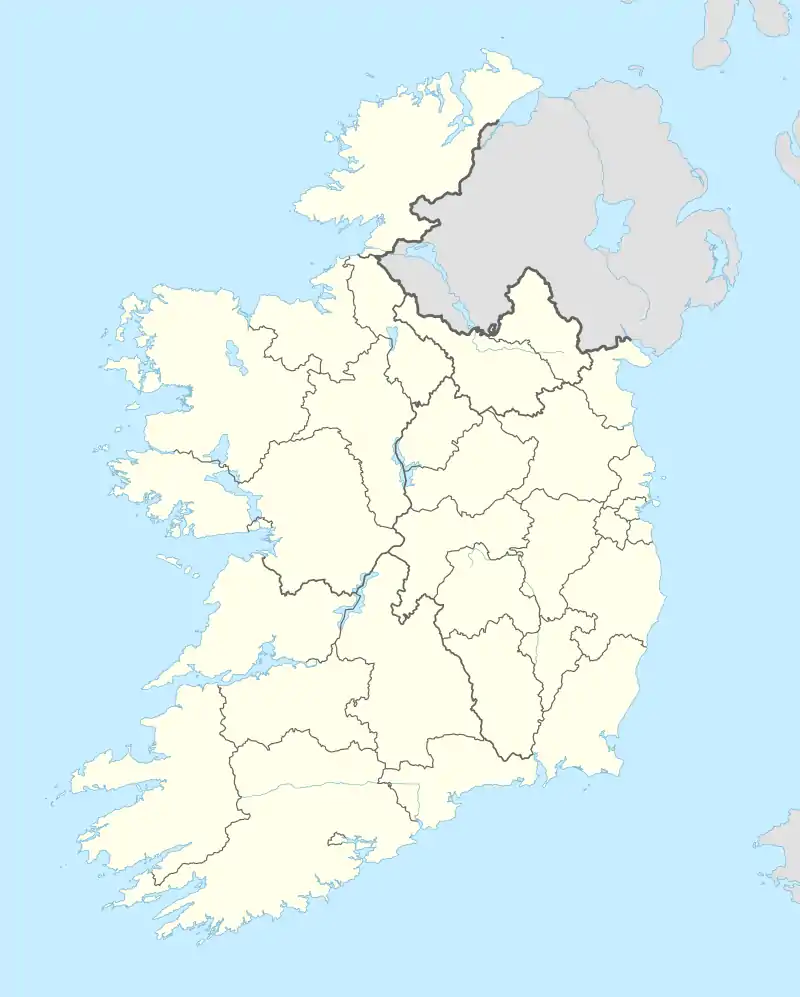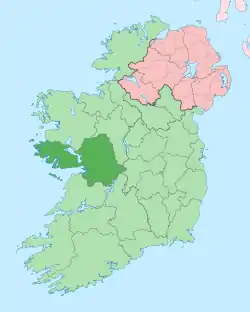Camus, County Galway
Camus or Camas is a small village in the Connemara Gaeltacht of County Galway, Ireland. It is between Casla and An Teach Dóite, and is divided into Camas Uachtair and Camas Íochtair, as well as several other townlands, such as Scríob, Gleann Trasna, Leitir Móir, and Doire Bhainbh.
Camas
Camus | |
|---|---|
Village | |
.jpg.webp) Landscape and houses in the Camus Oughter area | |
 Camas Location in Ireland | |
| Coordinates: 53°22′23″N 9°33′32″W | |
| Country | Ireland |
| Province | Connacht |
| County | County Galway |
| Elevation | 54 m (177 ft) |
| Irish Grid Reference | L963370 |
| Camas is the official spelling[1] | |
The village has the highest percentage of Irish language speakers in the Gaeltacht.
Name
The names Camus and Camas are both used.[1] However Camus, which has been in use for generations in both Irish and English, has been retained by the great majority of the population. The name in Irish refers to the shape of the nearby bay in which the tides come and go through the narrow strait at Dun Manus and enter Camus bay at an angle. The explanation of the name sometimes given - 'cam uisce' or crooked water - is etymologically unsustainable. Camus residents are known by their nickname of Maicíní (the etymology of this word is unclear, although it was common in south Conamara to give each village nicknames). Camus is also known in song as Camus na bhFoirnéis (Camus of the furnaces). It is believed that a small medieval foundry was operated close to the small bridge at the centre of the area in the 18th century.
Notable buildings
The former Camus national school, in Derry townland, was built in 1876.[2] The nearby Roman Catholic church, St Mary's Church, was completed in 1897.[3]
References
- "Camas / Camus (ionad daonra)". logainm.ie. Placenames Database of Ireland. Retrieved 3 January 2021.
- "Camus School, Derry (Dunkellin By), County Galway". buildingsofireland.ie. National Inventory of Architectural Heritage. Retrieved 3 January 2021.
- "St Mary's Church, Derry (Dunkellin By), County Galway". buildingsofireland.ie. National Inventory of Architectural Heritage. Retrieved 3 January 2021.
